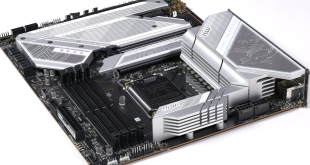Automatic CPU Overclocking:
As the Maximus VI Hero does not feature any pre-defined, heavily-tweaked overclocking profiles, we were forced to use the ‘CPU level up' settings as our automated process. In all honesty, I prefer the basic ‘CPU level up' overclocks as they apply a simple multiplier and VCore adjustment without changing DRAM frequencies and other parameters, sometimes for the worse.
The 4.40GHz ‘CPU level up' setting was the one that gave us stability at the highest frequency. The CPU VCore setting was left at ‘Auto' which proved stable enough for a few minutes of Prime95.
We suffered BSODs using the 4.60GHz level up, but this is past our 4770K chip's perfectly-stable limit of 4.50GHz.
The automatic overclock validation can be found here.
Manual CPU Overclocking:
To test the Asus Maximus VI Hero motherboard’s CPU overclocking potential, we first increased the CPU VCore to 1.350V, Cache voltage to 1.300V, and CPU Input Voltage to 1.900V.
PLL overvoltage was enabled, the Cache multiplier was maintained at 39x, and load-line calibration Level 1 was used (to provide a consistent voltage).
As with all of the previous Z87 motherboards that we have tested, the Asus Maximus VI Hero was able to boot into Windows using a 4.6GHz processor frequency, but it was only a few minutes before we suffered a BSOD.
We obtained stability by backing down to the 4.5GHz frequency that our 4770K chip has proven to like. Despite setting the CPU VCore as 1.350V through the BIOS, the Maximus VI Hero motherboard applies 1.360V while idling, and about 160mV more when under heavy load. Decreasing the BIOS-set voltage slightly helped to eliminate this over-adjustment.
Due to the fact that we observed similar behaviour with the Maximus VI Extreme, we would put this issue down to an easy-to-fix BIOS setting.
Our 4.5GHz validation can be viewed here.
High-speed Memory Compatibility:
While a system’s maximum memory frequency may be heavily swayed by the CPU’s individual memory controller, the motherboard’s performance can also help to obtain higher speeds, especially when XMP settings are taken into account.
We switched to a 3000MHz set of Avexir Core Extreme Series memory to test the Asus Maximus VI Hero motherboard’s support for high DRAM frequencies. These sticks feature an XMP profile for 3000MHz and are a great challenge for any Z87 motherboard to support. You can read the memory kit's individual review here.
Note: Asus provided us with a pre-release BIOS which may help to deliver better memory overclocking margins. We updated to this BIOS for the sole purpose of testing the Maximus VI Hero motherboard’s memory overclocking performance. The BIOS that we used will be available to download shortly.
Irrelevant of whether we used the 0711 BIOS or Asus' pre-release 0029 version, we couldn't obtain a stable boot at 3000MHz using two sticks. We did however manage to boot into Windows with one stick installed and running at 3000MHz.
Tweaking some of the voltages may have assisted in running the Avexir kit at its 3000MHz frequency, but that's not the point of testing with an XMP profile.
While failing to boot with 3000MHz memory is slightly disappointing on the Maximus VI Hero's part, feedback from our Facebook page and comments on our memory reviews tell us that the likelihood of gamers using such high-speed sticks is very low.
 KitGuru KitGuru.net – Tech News | Hardware News | Hardware Reviews | IOS | Mobile | Gaming | Graphics Cards
KitGuru KitGuru.net – Tech News | Hardware News | Hardware Reviews | IOS | Mobile | Gaming | Graphics Cards










